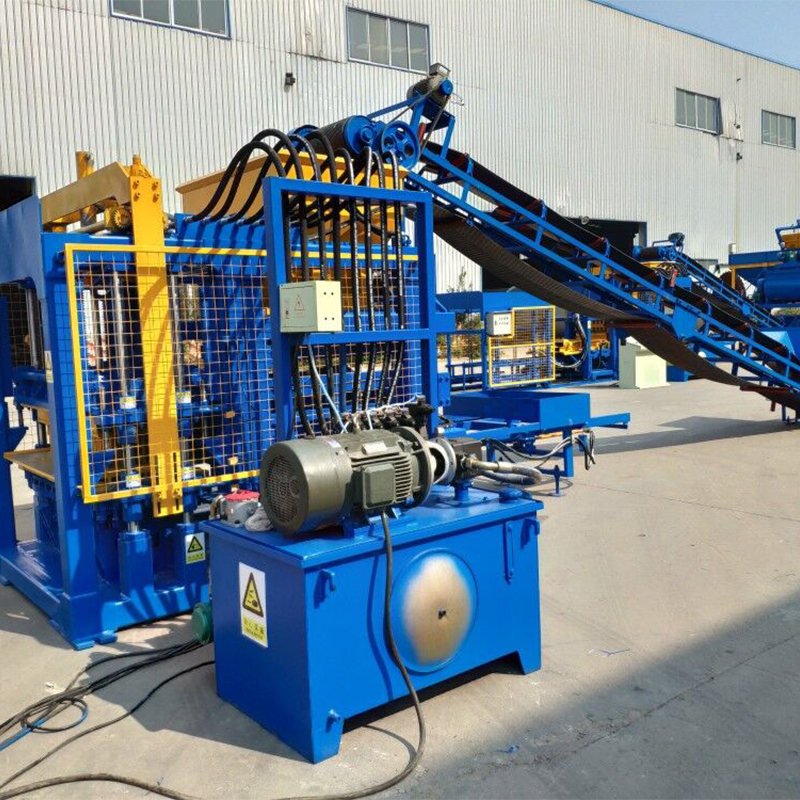
Title: Shaping a Unique Identity: Market Differentiation Strategies for Semi-Automatic Clay Brick Manufacturers
Introduction
In a competitive landscape, standing out in the market is essential for the success of semi-automatic clay brick manufacturers. While the technology itself offers advantages, strategic differentiation ensures that a manufacturer’s identity resonates with customers and stakeholders. This article explores effective market differentiation strategies for manufacturers in the semi-automatic clay brick industry.
1. Sustainable Production Practices:
- Strategy:
- Embrace and showcase sustainable production practices, from eco-friendly raw material sourcing to energy-efficient manufacturing processes.
- Rationale:
- Appeals to environmentally conscious consumers and aligns with the growing demand for sustainable construction materials.
2. Product Innovation and Customization:
- Strategy:
- Invest in product innovation and offer customization options in terms of colors, textures, and sizes.
- Rationale:
- Meets the demand for unique and personalized building solutions, providing architects and builders with a diverse range of options.
3. Quality Assurance and Certifications:
- Strategy:
- Implement rigorous quality assurance measures and obtain relevant certifications such as ISO standards or eco-labels.
- Rationale:
- Builds trust among consumers, architects, and builders by ensuring consistent and high-quality clay brick products.
4. Technological Advancements and Efficiency:
- Strategy:
- Continuously invest in and showcase technological advancements that improve production efficiency and reduce environmental impact.
- Rationale:
- Positions the company as an industry leader in adopting cutting-edge technologies, enhancing operational efficiency, and minimizing resource use.
5. Branding and Marketing Excellence:
- Strategy:
- Develop a compelling brand narrative, invest in effective marketing, and communicate the unique value propositions of semi-automatic clay bricks.
- Rationale:
- Creates brand recognition and differentiation in the market, influencing customer perceptions and preferences.
6. Transparent Supply Chain Practices:
- Strategy:
- Highlight transparent and ethical supply chain practices, including responsible sourcing of raw materials and fair treatment of employees.
- Rationale:
- Appeals to socially conscious consumers and establishes credibility through transparent business practices.
7. Customer Education and Engagement:
- Strategy:
- Implement customer education programs to explain the benefits of semi-automatic clay bricks and engage with customers through various channels.
- Rationale:
- Informed customers are more likely to appreciate the advantages of semi-automatic production and become advocates for the brand.
8. Collaborations and Industry Partnerships:
- Strategy:
- Seek collaborations and partnerships within the construction industry, involving architects, builders, or other stakeholders.
- Rationale:
- Strengthens the brand’s position in the market, enhances industry credibility, and opens up new avenues for growth.
9. Customer-Centric Service and Support:
- Strategy:
- Offer exceptional customer service and support throughout the buying process and beyond.
- Rationale:
- Builds customer loyalty, encourages repeat business, and enhances the overall customer experience.
10. Competitive Pricing and Value Proposition:
- Strategy:
- Develop a competitive pricing strategy while emphasizing the unique value proposition of semi-automatic clay bricks.
- Rationale:
- Ensures affordability while communicating the advantages and long-term benefits of choosing semi-automatic clay bricks.
11. Continuous Research and Development:
- Strategy:
- Prioritize ongoing research and development to stay ahead of industry trends and introduce innovative features.
- Rationale:
- Positions the company as a forward-thinking industry player, capable of adapting to evolving market demands.
12. Community Engagement and Corporate Social Responsibility (CSR):
- Strategy:
- Engage in community initiatives and demonstrate commitment to corporate social responsibility.
- Rationale:
- Enhances the brand’s image, fosters community goodwill, and contributes to a positive corporate identity.
Conclusion
Market differentiation for semi-automatic clay brick manufacturers involves a multifaceted approach that goes beyond technology. By emphasizing sustainability, innovation, quality, and customer-centric strategies, manufacturers can carve a unique identity in the market. Building a strong brand presence and delivering value to customers are pivotal in securing a competitive advantage and ensuring sustained success in the dynamic construction materials industry.
